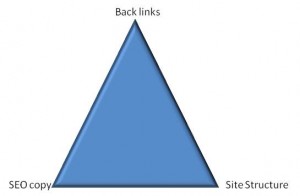Entries from July 2010 ↓
July 19th, 2010 — case studies, copywriter, freelance copywriter
 The use of case studies within your marketing strategy is a great way to boost your business profile whilst showing customers exactly what your product can do for them. Plus, because they use real life situations, your sales pitch gains extra credit.
The use of case studies within your marketing strategy is a great way to boost your business profile whilst showing customers exactly what your product can do for them. Plus, because they use real life situations, your sales pitch gains extra credit.
One way of creating powerful case studies is to combine an interview with the person involved. Quotes and personal insight will add weight. But interviews aren’t only for case studies, as a copywriter I use them extensively in projects such as newsletters, press releases, internal communications and news items.
The interview can generate a frame work from which the rest of the case study hangs and the quotes used substantiate claims whilst injecting your writing with life.
So how do you go about conducting an interview to make sure you get the most out of it? Well, that’s just what I’m about to tell you.
Tips to conduct an effective interview
1. Do your research
This one should be pretty obvious.
As with any form of copywriting, you should always ensure you do your research before you start. Whether it’s a website, brochures, other interviews, press or magazines, spending the time to read about your interviewee will prevent you from asking them the same old questions they always get asked. It will also help you find angles for your interview.
2. What’s it for?
Asking a load of questions isn’t going to generate a great interview. Before you begin think about why you are doing the interview. What is it that you want to get acorss? If you are interviewing a customer who is using one of your products, make sure you ask them about it. You’ll want to know why they chose it, what has it done for them? Information that your reader is going to want to know.
Once you have a clear focus in mind, make sure you stick to it rather than getting side tracked.
3. How?
You must also decide how it is to be conducted. By far the most effective way is face to face but that isn’t always practical (or cost effective). Usually I opt for a phone interview. I wouldn’t recommend an email interview as it is really difficult to get great quotes. Most people will refine their answers until you get something quite impersonal. If you can chat with your subject, either face to face or over the phone, you are more likely to build up rapport and get some great quotes.
4. Schedule it
Whenever I have to arrange an interview I always like to email in the first instance. In the email I explain who I am (and make sure all my contact details are included), and why I want to do the interview. Rather than asking them for a convenient time and date – which can lead to a constant stream of emails bouncing backwards and forwards as you try to agree on a date – I tend to offer a couple of alternatives and ask them to choose one.
It’s always wise to send them an email reminder a couple of days before and don’t arrange back to back interviews. Firstly, you won’t know how long each one will take. And, secondly, they are quite tiring.
5. What to ask?
Before you begin your interview (and after you’ve done your research), make a list of questions. Try to avoid closed questions as they won’t get you anywhere and make sure you always have the reader in mind. Make sure the questions you ask are relevant to the purpose of the piece you are writing and ensure you ask for answers in ‘language our readers can understand’ especially if you are dealing with a complex subject.
The best way to generate great quotes is to ask your interviewee to tell you a story about the process, what their opinion or impression was of it. That type of question will get them to open up and talk more freely about the subject.
6. What do I do now?
I don’t know about you, but I’m very bad at shorthand. Plus I find if I’m trying to take notes during the interview, I don’t concentrate fully on the answers I’m being given. Therefore I record my phone interviews (of course, with my subjects permission). I don’t have any fancy tech, just a speaker phone and a digital recorder which then allows me to upload the file to my PC.
Once the interview is completed I transcribe it. You can get this done for you if you prefer, but I find doing it myself helps me to get a better feel for the material. Plus it’s a great way to put a mental structure together for your case study and, as you type, you can highlight key information and great quotes.
So there you go. Interviews are invaluable but can be a bit scary if you’ve not done many before. But don’t worry about it (your subject will also be nervous) – open your interview with a few light questions to put them (and you) at their ease.
Just remember – research before hand, make a list of relevant questions and engage with them. If you sound disinterested they’ll close up. Listen, absorb and react and then you’ll get great material to produce a killer case study.
July 16th, 2010 — copywriter, freelance copywriter, twitter
 It’s been a while since I blogged about Twitter for business, so I’m about to set that straight.
It’s been a while since I blogged about Twitter for business, so I’m about to set that straight.
So are you using it yet?
From conversations I’ve had with people about Twitter, there appear to be many of you that are still undecided about joining the Twitterati. There are others who know they should be part of the feathered gang but aren’t too sure what to do about it.
Twitter isn’t complicated – it is probably one of the easiest tools to use, but you have to learn to use it well.
Tweeting basics
Before you even start to worry about what you should be Tweeting, you have to set your account up.
If you want people to follow you make sure you upload a good avatar – whether it’s a photo of you, your business logo or something else. If you don’t upload one and opt for the generic Twitter image, what is there to set you apart from other people? Don’t be shy, reveal yourself to your followers (boy, that sounds so wrong, but you know what I mean) so they can put a face or company image to the personality.
The next thing you need to do it complete your biography. Not only will this help people find you, it will also make you sound interesting and worth following. Personally, if someone follows me and they don’t have a unique image or a bio, it is very unlikely I’ll follow back. Why should I? I don’t know who they are, what they do or whether I’m going to be interested in anything they tweet.
So before you go any further, make sure you have a good avatar and bio.
As for actually using Twitter to its full potential, take a look at this post by Chris Brogan – 50 Power Twitter Tips – a fantastic resource to get you started and Tweeting successfully. So go and check it out.
I look forward to tweeting with you – you can follow me here.
Sally Ormond – freelance copywriter
July 14th, 2010 — blogging for business, copywriter, freelance copywriter, search engine optimisation
 Every business that uses the internet wants to get found. That’s pretty obvious, right? But how to you go about getting found?
Every business that uses the internet wants to get found. That’s pretty obvious, right? But how to you go about getting found?
Search engine optimisation is obviously a big part of this, which is a subject I’ve talked about a lot on this blog. One aspect of that is building back links.
What’s a back link?
If you want people to find your website, you need lots of arrows pointing to it – these ‘arrows’ are back links. Take, for example, the paragraph above. As you can see there’s a link – search engine optimisation – that is an internal link as it points you to a previous blog post. However if I were to write about a freelance copywriter who would be able to boost your businesses visibility and sales by producing eye-catching sales writing that inspires customers to buy, that is a back link because it’s pointing to an external website.
How do you get back links?
Encouraging people to link to your website takes work. Generating high quality content is the key. If you are providing great information regularly, people will want to link to you. Creating hints and tips in your chosen field will also help elevate you to expert status, and with that comes more links. But there are ways you can also generate links yourself.
Blogging and article marketing are two very effective ways of building back links, especially the most sought after type – the keyword hypertext link. I showed you an example of that earlier by linking the words ‘freelance copywriter’. This just happens to be one of my key phrases. These are the most valuable links as they relate to your chosen keywords. You can generate a lot of links by submitting your website to directories, however they tend to just link by website name (e.g. Briar Copywriting) rather than by your keywords.
Going back to article marketing for a moment, when you post an article and insert a keyword hypertext link into your text, you are effectively funneling a bit of link juice to your website. That might sound a bit strange, but this is how it works. If you use an article site with a high Google Page Rank (e.g. ezinearticles) and they allow you to add hypertext keyword links which are follow links (as opposed to the no follow link), a little bit of page rank is also passed along the link. Therefore the more links like that, the higher your chances of increasing your own website’s page rank.
Another way of generating back links is by guest blogging and using social media and social networking sites. These are great because you can add your profile details to widen your ‘internet footprint’ therefore boosting your chances of being found online. Some sites even provide facilities to create your own micro-site which gives you even more exposure. Taking advantage of opportunities likes these and contributing to forums etc., will boost your exposure.
One giant step…
Generating back links is invaluable and you would do well to get into a routine to create blogs and articles that constantly generate links for you. Make sure the content is fantastic and keyword rich to encourage others to link to you.
But don’t forget about the other elements of SEO. Back links should just be one part of your SEO strategy. You must also consider your website’s structure and content.
 All three elements are essential if you want your website to be found online. But you must remember that SEO is an ongoing process. You have to constantly review your keywords, constantly tweak and update your content to get the optimium amount of traffic and conversions and you must continually build back links.
All three elements are essential if you want your website to be found online. But you must remember that SEO is an ongoing process. You have to constantly review your keywords, constantly tweak and update your content to get the optimium amount of traffic and conversions and you must continually build back links.
Your competitors will be doing all of this, so if you stop you’ll gradually become invisible to online customers.
July 12th, 2010 — copywriter, freelance copywriter, keywords, search engine optimisation
 When people think about search engine optimisation, they immediately start thinking about keywords and search engine rankings. There’s nothing wrong with that, but if you spend every waking hour worrying about that, you might be missing something more concerning; something that could be happening right now.
When people think about search engine optimisation, they immediately start thinking about keywords and search engine rankings. There’s nothing wrong with that, but if you spend every waking hour worrying about that, you might be missing something more concerning; something that could be happening right now.
Every website owner should use Google Analytics. This small powerhouse of stats and graphs will show you how your website is performing. Information such as which keywords bring you the most traffic, sources of your traffic, which pages get the most hits and the geographical spread of your visitors is all at your finger tips. But one of the key stats that will show how effective your website is, is the bounce rate.
What is bounce rate?
The bounce rate is a figure that shows the percentage of visitors to your website that leave within the first 10 seconds. And that’s not good. If visitors are leaving that soon it shows that they haven’t found what they were looking for. A site with a low bounce rate (say below 30%) will be a website that is converting its visitors into customers. A site with a bounce rate of 50% and higher is one that isn’t converting – it’s failing.
If your rate is 50% and above, its time to take a look at your SEO.
Factors affecting bounce rate
Traffic to your website comes from a number of different sources:
- organic search results
- backlinks from referal sites
- repeat visitors
- social bookmarking traffic
- PPC traffic
The source with the lowest bounce rate should be your PPC traffic – if you use pay per click. If the highest rate comes from your organic traffic this would suggest that you have a mismatch with your keywords.
As a freelance copywriter it won’t come as any surprise that that is one of my keywords. So if people Google freelance copywriter they’ll find me. But what if I’d targeted something like marketing agency and they were looking for a company to deal with all their design and branding needs? When they land on my home page they’d find great information about my freelance copywriting services but no mention of design or branding. The result would be that they would click away from my site which would lead to a high bounce rate.

Therefore it is essential you ensure your keyword selection truly reflects what you do. Shed loads of traffic is useless without conversions.
But it might not be just down to your keywords. Here are other factors that may be causing people to click away from you site:
- too much advertising – this could be making your site look messy with too many messages
- videos and music – especially if they are on auto play as soon as your website is opened. The can be really annoying
- navigation choices – too many and your visitors will get confused, too few and they won’t know where to go next
- slow loading speed – peopel don’t like hanging around waiting for websites to load
- excessive corporate speak and jargon in your copy will be a huge turn off
- bad design – if you site looks unattractive it won’t encourage people to stay
So, if you are experiencing high bounce rates take a look at your site and compare it with the list above. Take another look at your keywords – are they really reflecting what your site is about?
If you can bring down your bounce rate you’ll boost your conversations.
July 9th, 2010 — blogging, blogging for business, copywriter, freelance copywriter

As a freelance copywriter, I have been blogging for several years now, so what I do has become second nature. But many of you are probably coming to blogging without any experience and find the whole concept daunting. To me, it is a simple and effective method you can use to promote your business, elevate yourself to expert status within your field and get the word out about what you do.
Last week I had lunch with one of my clients who was quizzing me about various aspects of social media marketing, including blogging. As I enthusiastically launched into a speech outlining all the major benefits that blogging brings, I could see he was drowning in information overload. So I thought the easiest way to explain how to blog effectively was to blog about it.
How to be an effective blogger
The key to blogging is to do it regularly. It’s like all social media, the more you do it, the more exposure you’ll get and the more you’ll get out of it. The optimium blogging frequency will differ depending on who you talk to. Some blog daily, some even multiple times per day. But to be successful, you have to find a frequency that works for you.
Personally, I post blogs three times a week (twice a week on my other blog). This fits in with the time I have available and provides regular content for my readers. Whatever you decide, stick to it. As you gather regular readers they will grow to expect your next ‘installment’ so don’t disappoint them.
To help me stay on course, I tend to blog ahead and schedule the posts. Therefore if I have a ‘quiet’ day I can write several posts, upload them and schedule them for publication – this can save a lot of time.
As you read this, the number of times you blog probably isn’t at the forefront of your mind right now. You’re probably thinking how on earth can you constantly generate new ideas? Well, we’ll look at that next.
Ideas factory
Coming up with new material can seem daunting when you’re first starting out. So here are some tips to make sure those ideas keep flowing:
- keep a pad on your desk so when an idea comes to you, you can jot it down
- read other industry blogs and magazines to generate ideas
- comment on current affairs especially if you can tie them into your industry
- invite your readers to comment – you may get some spin off ideas from these
- write ‘how to articles’ and ‘top tips’ relating to what you do
Before you know it, you’ll have a stack of articles ready to go.
What’s your purpose?
As you are writing, make sure you know why you are writing. Every post must be created with a purpose. You may be looking to promote something through your writing, perhaps you want to start a discussion, you might be after more business or perhaps you want to attract links.
Whatever it is, keep this in the forefront of your mind as you write.
Every post is valuable so make sure you make it work for you.
Giving something back
Don’t forget, if you want people to take time out of their busy day to read your posts, you have to give them something in return.
The information has to be of value to them. Plus, try to remain on topic. What do I mean? Well, this blog is all about copywriting tips, marketing tips, how to use social media marketing and copywriting SEO related issues. So when a post is published you, my readers, know roughly what genre it will be about. If you bombard your readers with random posts they probably won’t come back for more.
Make your blog an encyclopedia for your area of expertise.
Write simply and with love
The layout of your blog post is very important. It has to be attractive and not too heavy.
Begin with a catchy heading. It should be interesting enough to draw in your reader so arouse their curiosity. To help your SEO, get your keyword in there – so if you are writing about copywriting, try and get that into the heading if you can.
Next comes an image. You may not see that as important, but a good image will draw readers in. Use something playful, something that will pique their curiosity.
Then comes the hard part – writing an interesting and entertaining post. Make sure the body of your post is packed with useful information. You know the audience you are targeting and therefore you’ll know what they are looking for – so give to them in spades. Break up the copy with sub headings to make it easier to read. And finally don’t let it go out with a fizzle; invite comments or add in a call to action (depending on what the aim of your post is).
So that’s how I go about blogging. What do you do? Do you have any other ideas to help out the new bloggers on the block?
 The use of case studies within your marketing strategy is a great way to boost your business profile whilst showing customers exactly what your product can do for them. Plus, because they use real life situations, your sales pitch gains extra credit.
The use of case studies within your marketing strategy is a great way to boost your business profile whilst showing customers exactly what your product can do for them. Plus, because they use real life situations, your sales pitch gains extra credit. It’s been a while since I blogged about Twitter for business, so I’m about to set that straight.
It’s been a while since I blogged about Twitter for business, so I’m about to set that straight. Every business that uses the internet wants to get found. That’s pretty obvious, right? But how to you go about getting found?
Every business that uses the internet wants to get found. That’s pretty obvious, right? But how to you go about getting found? All three elements are essential if you want your website to be found online. But you must remember that SEO is an ongoing process. You have to constantly review your keywords, constantly tweak and update your content to get the optimium amount of traffic and conversions and you must continually build back links.
All three elements are essential if you want your website to be found online. But you must remember that SEO is an ongoing process. You have to constantly review your keywords, constantly tweak and update your content to get the optimium amount of traffic and conversions and you must continually build back links. When people think about
When people think about 






